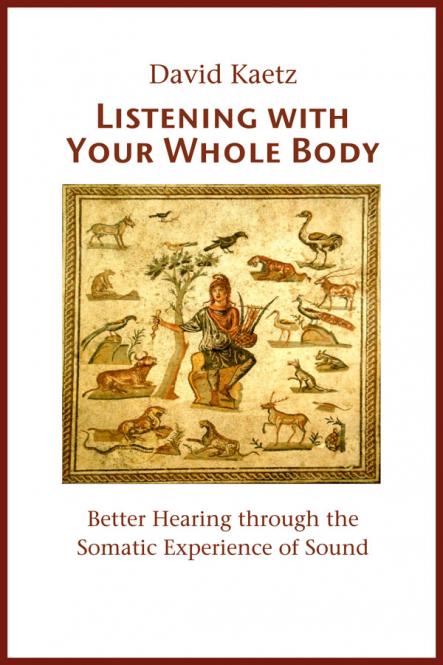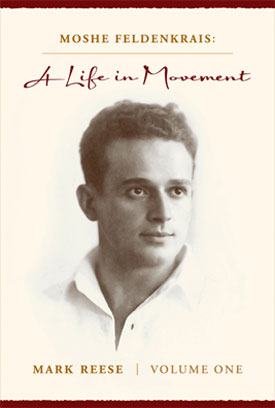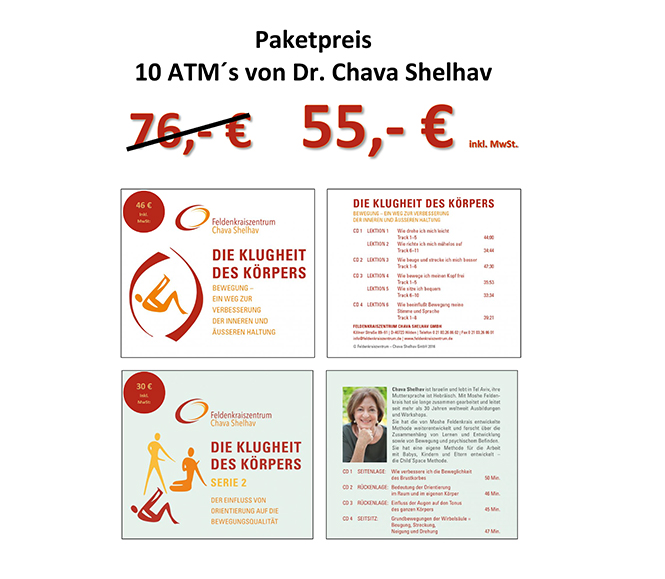Beschreibung
Das Buch unseres Referenten David Kaetz zum somatischen Horchen, nun auch beim Feldenkraiszentrum erhältlich.
What can you do to improve your own hearing and listening? How can you get more joy out of music, listen more effectively to others, and take better care of this precious window on the world?
As it is the whole person who walks and runs, and not just the legs, it is surely the whole person who looks and sees, listens and hears.
Working with the whole sensing person produces qualitative shifts in perception. In other words, by learning to look and listen differently, people do see and hear differently. Improving your listening can alter the dimensionality, depth, colour, and texture of your auditory experience, along with your satisfaction from it. These changes in the experienced quality of perception do not occur in the ears, but in the brain. The sense of hearing is about far more than loudness, and the activity of listening—one of the least observed but most central aspects of our being—involves far more than our ears.
What else is involved in hearing—besides the ears, that is?
That is a big question, which we could start to address through a rough analogy. The eyes have so-called central vision—that is, what we are looking at—and it is in order to improve central vision that we wear corrective lenses. However, we also have peripheral vision, whereby we see things, often unconsciously, on the edges of our visual field. From the viewpoint of our evolution, noticing movement on the edges of the visual field would have been more important to our survival than, for example, reading the Neolithic Daily News. Glasses, naturally enough, diminish our peripheral vision, or at least separate it markedly from central vision. To recover our natural eyesight would, among other things, mean to recover a balance between peripheral and central vision.
We can use this rough analogy to get a new perspective on the auditory sense. Of course, the ears are crucial to human hearing. Their central task is picking up the frequencies of the human voice. The screaming of bats, for example, does not fall into their frequency range (ultrasound); nor do we hear what elephants say to one another in their extremely low- frequency conversations (infrasound). One could imagine the internal and external sensing of the body—especially the sensing of minute motions—as a kind of peripheral hearing. It provides us with information, usually unconscious, which nonetheless helps us survive: the distant rumble of a herd of muskox, the scream of a mountain lion, a changing weather system felt in the sinuses, a feeling of harmony or disharmony in the gut, etc. Why is it that people wearing headphones—with eyes wide open—are more likely to walk into a street sign, or fall off a bridge? It may be they are missing subtle “peripheral” cues coming through their legs, the reflection of sound off a building, etc. Through their headphones they are in one place, and in their body, another. (The wearing of headphones, and with it, the creation of competing streams of input having virtually nothing to do with each other, is an unprecedented development in human history. It makes sense in a sound studio, but it could hardly be said to bring us closer to nature, where we attend to our environment with all of our senses together. Our ears function best in coordination with all of our other faculties, as our shoulders function best in coordination with our spine.)
Awareness of sound happens through processes which no-one can claim to understand fully or even to locate precisely. However, we can safely say that it is the brain that is making sense of the world, summing up all the input streams available to it. Our “auditory image” of the world is likewise constructed from several streams of information. If you can hear well through your ears, you will hear better still when your eyes are relaxed, your breath is free, your skeleton is well-aligned, and—above all—when you are listening with a quiet mind.
Autor: David Kaetz
In englischer Sprache (Bezug über Feldenkraiszentum Chava Shelhav)




